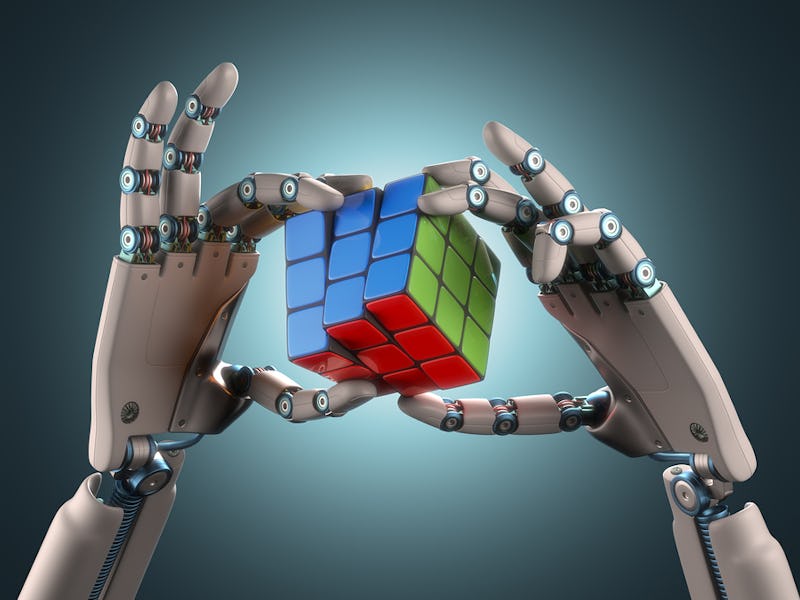Robotic Hand Design Is One of the Big Problems Facing Robotics Today

You don’t think about it much, but your hands are remarkable. Human hands can carry ripe fruit without bruising it, line up a key in a lock, turn door knobs, tie knots in shoelaces, feel if things are hot or cold, and open the heavy-duty plastic clamshell packing for electronics. Right now, if a robot hand is carefully designed, it can maybe do only a few of those things, and not well.
“If you want a robot to be able to collaborate with a human, say in a manufacturing setting and be able to do multiple tasks that humans can do, we need to move past specific grippers to more multipurpose hands,” Taskin Padir, an electrical engineer at Northeastern University, tells Inverse.
But hands are hard, Padir says. Designing robotic hands that can complete more than one kind of action is one of the biggest challenges facing robotics today, Padir points out in a post in The Conversation. And while it may seem like withholding hands from robots could slow the robot takeover, robots with dexterous hands are essential for care-taking and helper robots.
“Next time you tie your shoes, watch you hands, and see what complex and fine motor skills you can complete,” he says. That’s what robots need to be able to do. Even the $2 million NASA Valkyrie robot still has limited hand use, although it has the most advanced robotic hands Padir has seen.
There are a few aspects of hands that have to be overcome, says Padir. Cost, artificial intelligence that enables robots to perform necessary movements in real-time, and coordinates two hands to work together, are aspects that still haven’t been worked out.
The immediate problem is scale, Padir says.
“We do not have, yet, human-like sensing and actuation capabilities that we can fit into packaging the size of a human hand,” says Padir. “We figured out gears, we figured out nuts and bolts, but we need to look outside the box to come up with those technologies.”
Once there’s a solid research model, he thinks it will only take ten years for the technology to make it into the commercial market. Padir is hopeful for micro and nano size sensor technology to keep advancing, which he thinks are instrumental in developing robot hands that are nimble and multi-purpose.
With hands that can do more than one motion, elder-care robots of the future will be able to lift grandparents without leaving bruises and open car doors. And that’s a future we should give robots a hand in making.